How to Taste Rock Oysters Like an Oyster Sommelier
01 September, 2025
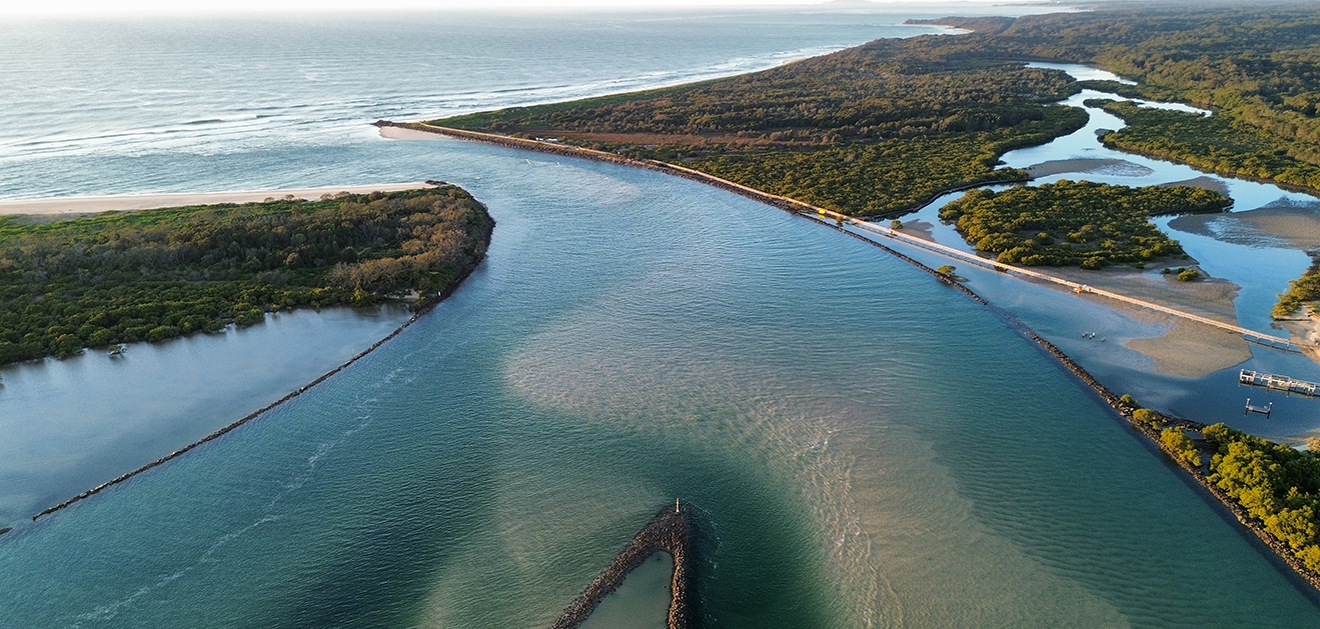
28 August, 2025
From Wonboyn in the south to Kalang River in the north, our oysters our oysters are sourced from more than 1,500 km of NSW coastline, nurtured across more than 60 estuaries, each a singular scholar in flavour and place. It’s this remarkable ability to capture the merroir of the waters in which it grows, that is the most unique feature of a Rock Oyster.
No two Rock Oysters are ever the same. Their true beauty lies in the way they reflect not only the natural environment of their estuary, but also the quiet skill of the farmer who nurtures them and allows their character to shine.
This is why provenance matters. Across New South Wales, every estuary writes its own flavour story shaped by the seasons, the tides, salinity, rainfall, nutrient flows, and the care of the farmer. The result is a tasting experience as diverse and distinctive as the oysters themselves.
Our estuary guide brings these differences to life, revealing just how important place is to flavour, and why tasting oysters from different estuaries is like journeying the NSW coastline, one shell at a time. We give you an overview in this article.
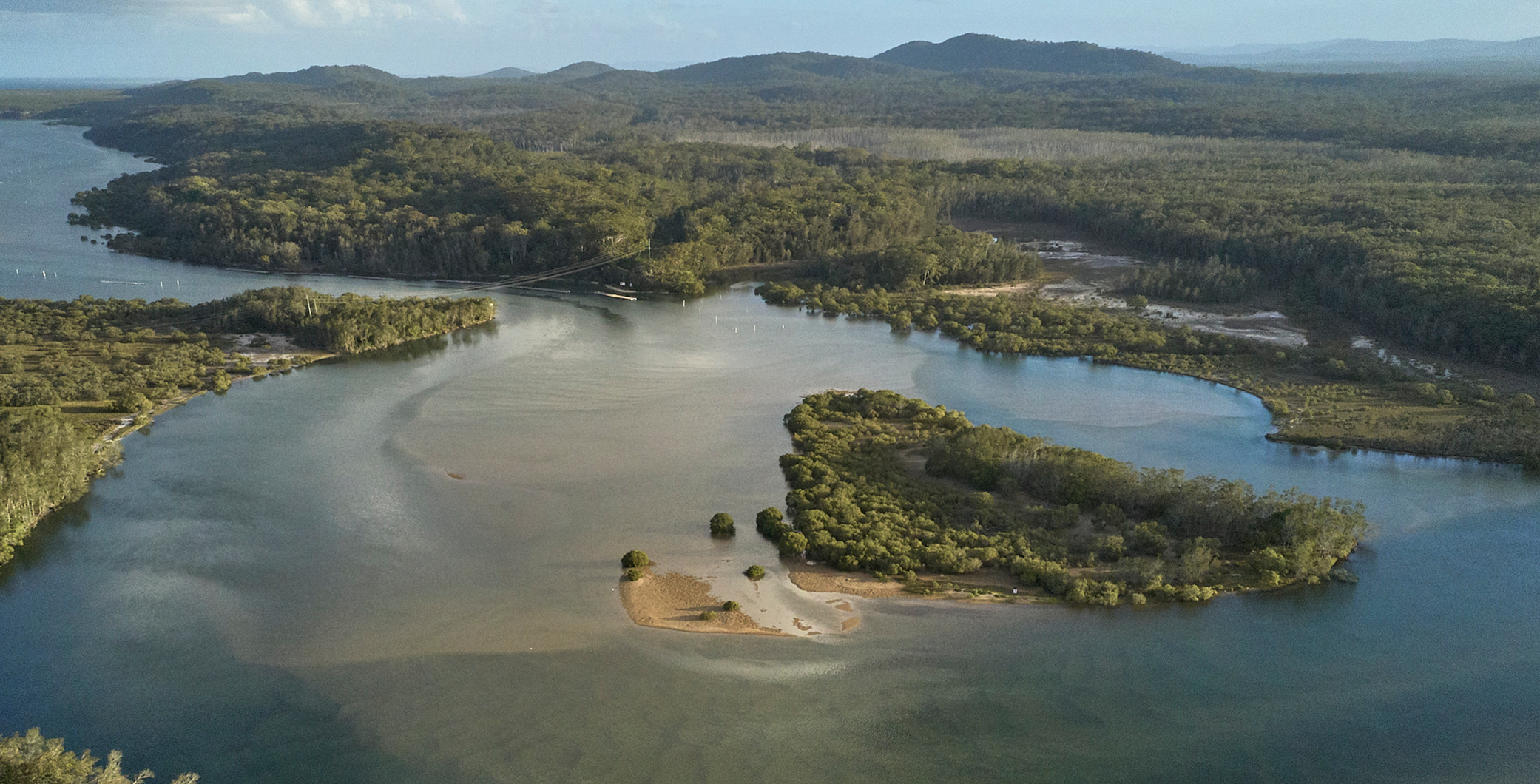 Wooli Wooli River
Wooli Wooli RiverGumbainggir Country | 29.861° S, 152.262° E
The Wooli Wooli River, on Gumbaynggirr Country about 590 km north of Sydney, has a slender form with a narrow ocean mouth that funnels nutrient-rich waters through the oyster leases. Freshwater flows from the nearby Coastal Ranges, meandering through native bush reserves, seagrass, mangroves and saltmarsh before meeting oceanic water, creating a balanced mix of moderate salinity and high food concentration. With sandy, silty and seagrass-rich benthos, this environment, combined with modern farming techniques, produces Rock oysters that are rich and creamy with moderate salinity, subtle mineralisation, and lingering vegetal notes.
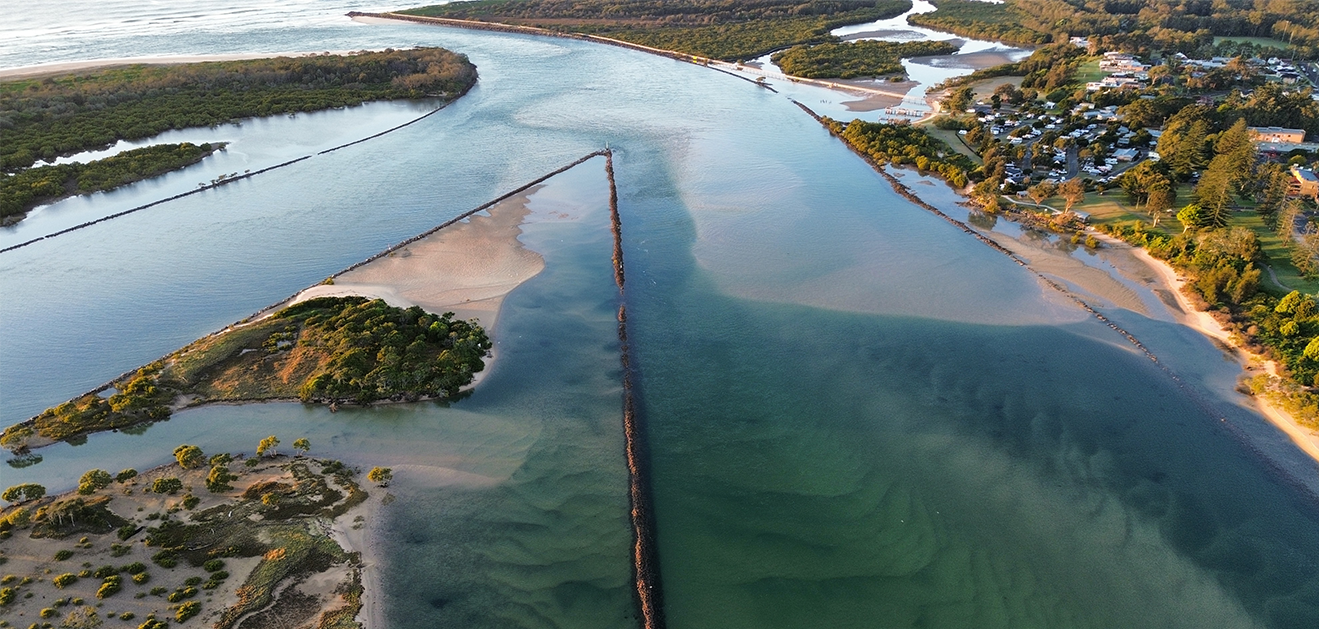 Kalang
KalangGumbainggir Country | 29.861° S, 152.262° E
Kalang River, on Gumbainggir Country about 530km north of Sydney, takes its name from the Aboriginal word for “beautiful”- an apt description for this pristine estuary fringed by national park and semi-rural farmland. With only around 8 hectares of leases and a single commercial grower, it is a small but special oyster-producing system. Fed by freshwater from the surrounding park and balanced by strong tidal influence, Kalang Rock Oysters are known for fattening earlier than most on the north coast. Their flavour is distinctively sweet and creamy, with a feta-like saltiness, marine vegetal umami from mangroves, and minerality from trace elements. Seagrass-rich waters and nutrient inputs complete their unique profile, delivering a deep, lingering flavour true to native Australian Rock Oysters.
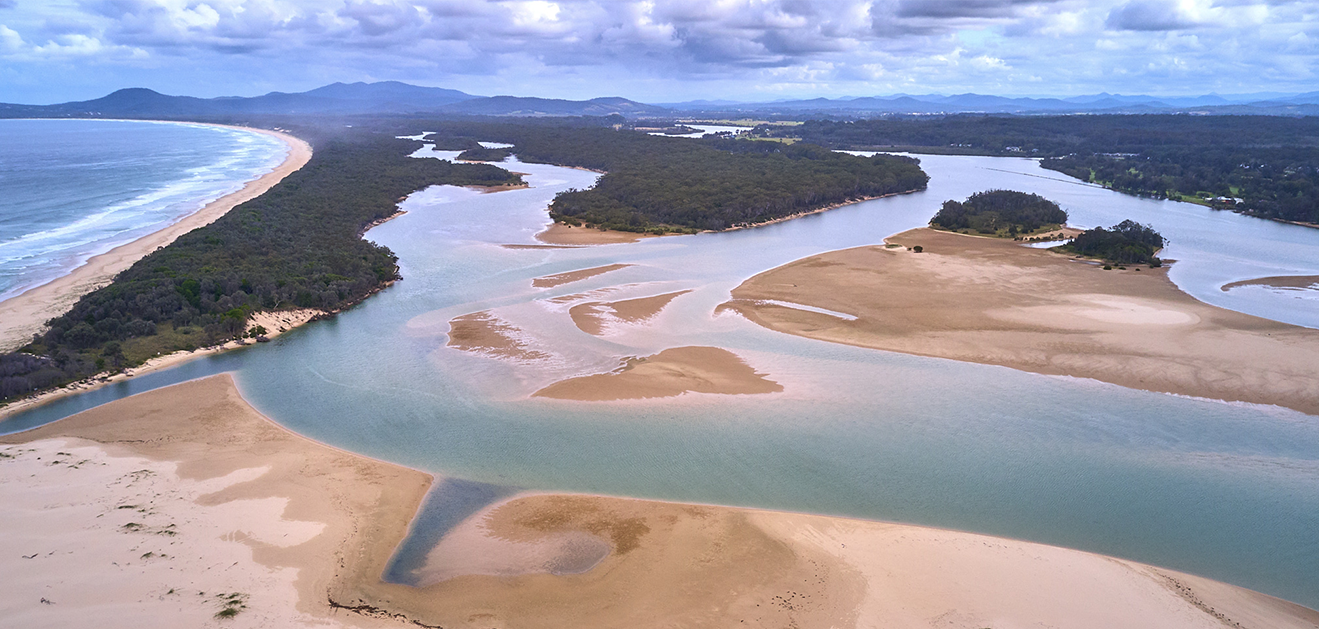 Nambucca River
Nambucca RiverGumbainggir Country | 30.64° S, 153.01° E
The Nambucca River, on Gumbaynggirr Country about 480km north of Sydney, winds its way from the Dorrigo Plateau in the Great Dividing Range through Taylors Arm and Warrell Creek before meeting the Pacific Ocean at Nambucca Heads. Its name, from the Aboriginal word ngambugka, means “winding or crooked river,” reflecting the estuary’s sweeping bends and tidal flows. Surrounded by extensive mangrove, saltmarsh, and seagrass communities, the Nambucca estuary provides ideal conditions for Sydney Rock Oysters. Here, oysters grow fat, rich, and plump, developing a creamy texture with mild brininess, sharp vegetal notes, and a long, mineral-rich umami finish that lingers on the palate.
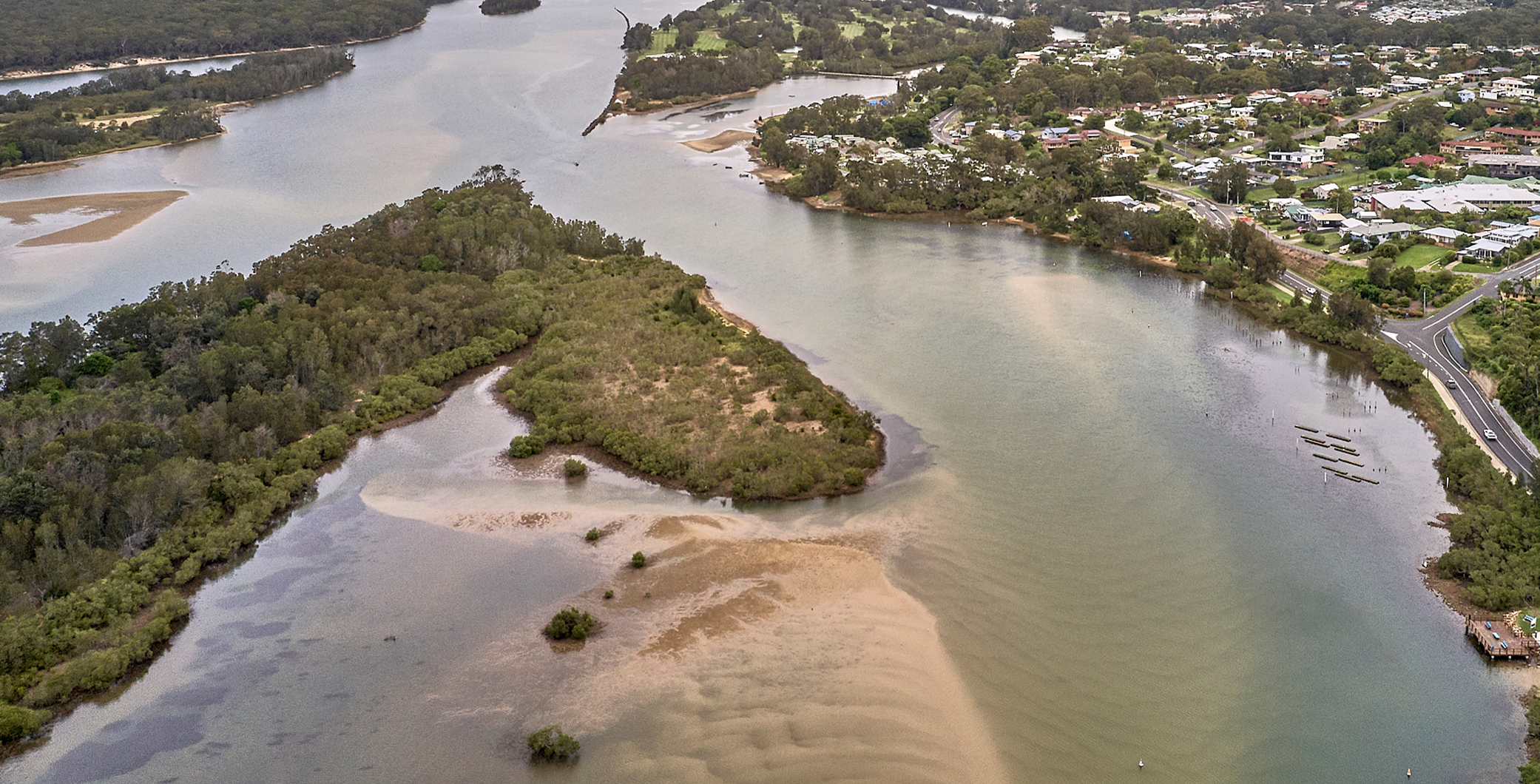 Macleay River
Macleay RiverDainggatti Country | 32.264° S, 152.486° E
On Dainggatti Country, the Macleay River Rock Oyster grows in an open, wave-dominated barrier estuary just 500m from the Tasman Sea. Fed by the Great Dividing Range and more than twenty tributaries, the river’s strong tidal flows, silty seabed, and nutrient-rich wetlands create an environment that produces oysters high in brine, with medium sweetness, vegetal notes, and a big mouthful of umami. Rich in zinc, copper, and magnesium, these oysters are creamy at their summer peak, with a delicate balance of sweetness, mineralisation, and lasting umami.
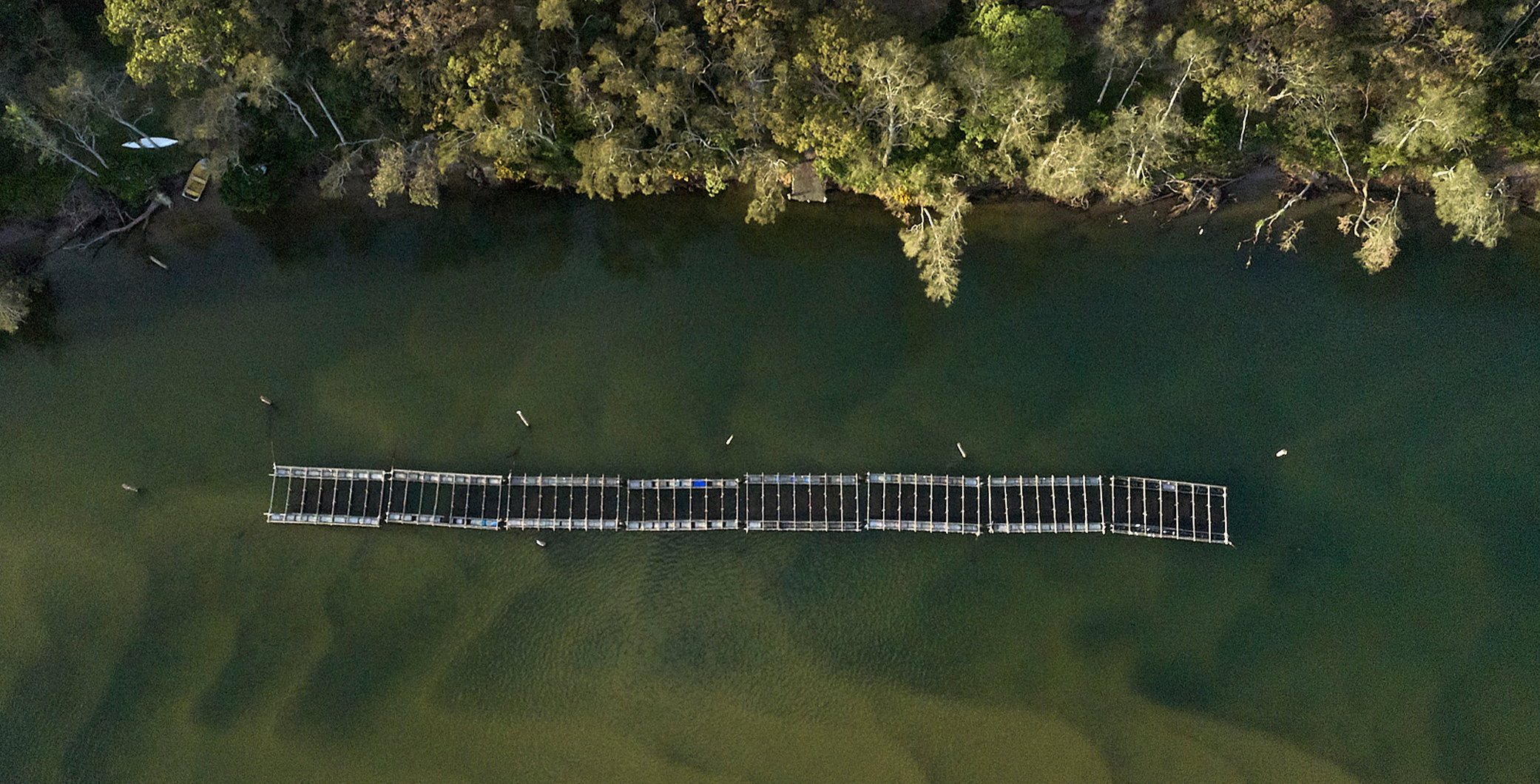 Hastings River
Hastings RiverBiripi Country | 31.422° S, 152.874° E
The Hastings River Rock Oyster, grown on Biripi Country near Port Macquarie, is prized for its full creamy texture, mild brininess, and lasting umami. Fed by tributaries and nutrient-rich mangroves and seagrass, the river’s lower salinity creates oysters that are sweet, rich in zinc and minerals, and at their creamiest in summer and autumn. Flavour profile: creamy, mildly briny, with a mineral finish and big umami.
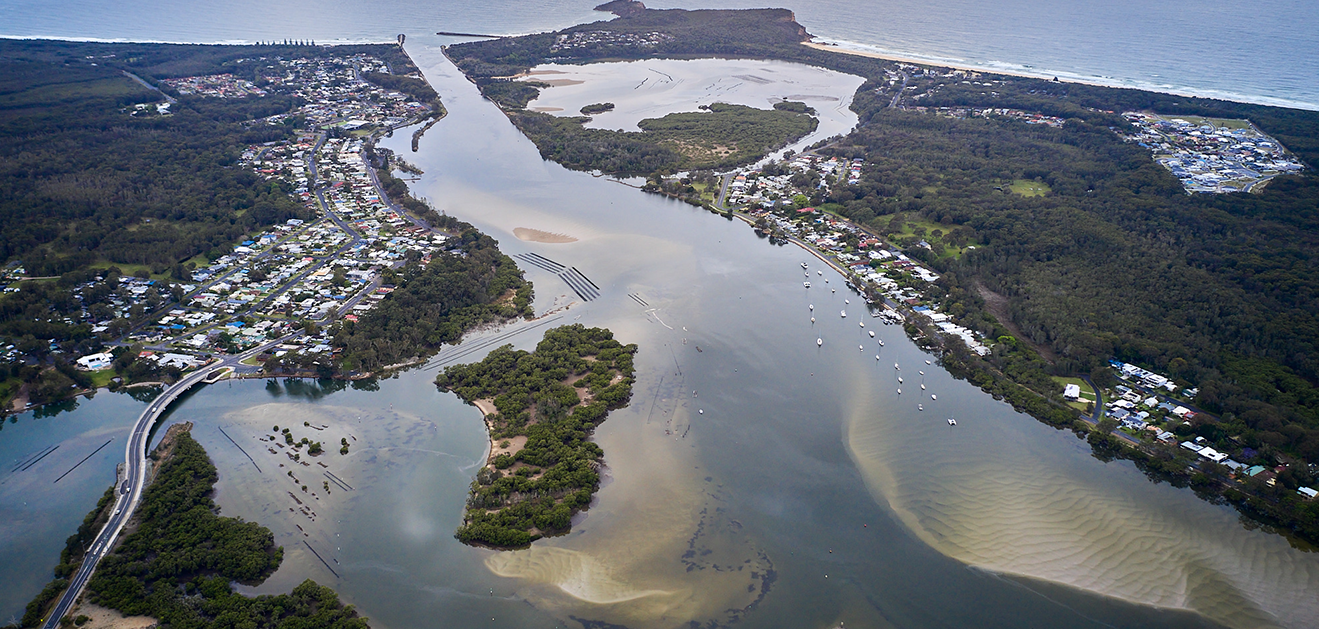 Camden Haven
Camden HavenBiripi Country | 31.6470° S, 152.8090° E
Camden Haven Rock Oysters, grown on Biripi Country beneath the spiritual presence of North Brother Mountain (Dooragan), are prized for their creaminess and bold brininess. Fed by a pristine estuary rich in seagrass, mangroves, and wetlands, they carry subtle umami alongside their salty punch. With three harvest zones showcasing distinct merroirs, these oysters peak in summer with deep shells, generous flesh, and a signature balance of sweetness, creaminess, umami, and high brine.
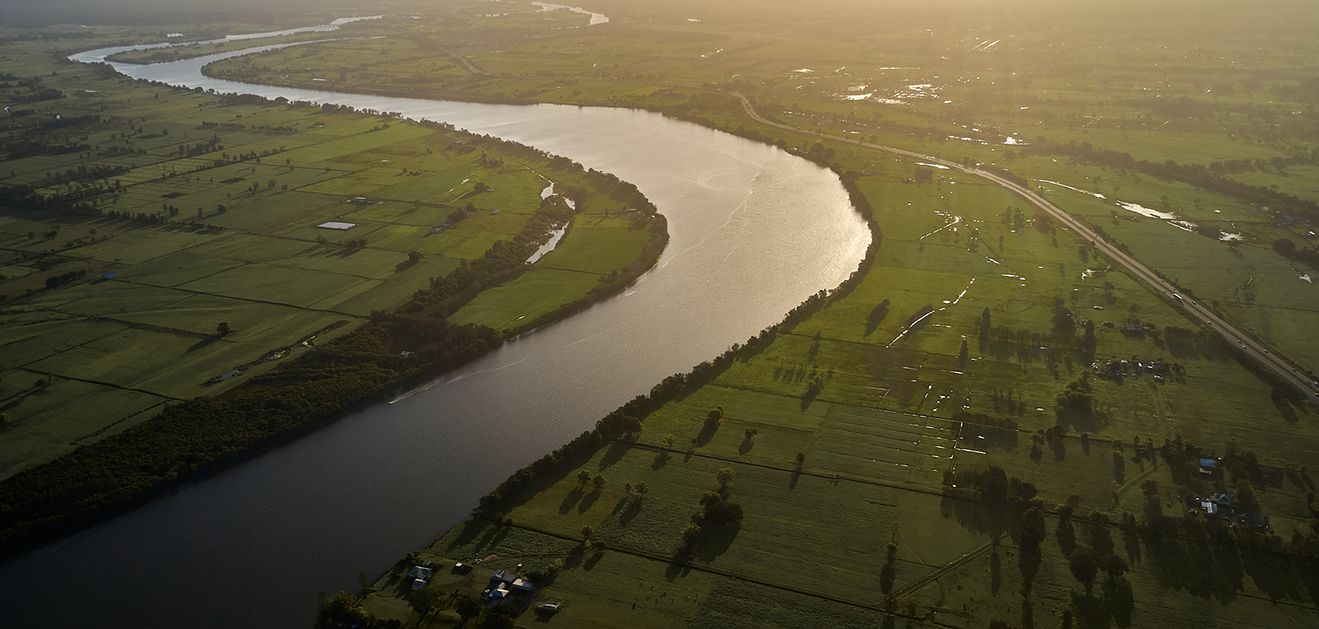 Manning River
Manning RiverBiripi Country | 31.87° S, 152.66° E
The Manning River, on Biripi Country about 350km north of Sydney, is a unique estuarine system and one of only two river deltas in the Southern Hemisphere with dual entrances at Harrington and Farquhar Inlet. Fed by a vast catchment stretching inland to Barrington Tops, its intricate network of creeks and channels creates a quiet, pristine growing environment rich in aquatic life. Manning River Rock Oysters grow slowly in these mineralised waters, developing a delicate, balanced flavour. Known for being sweet and fat with softer salinity, they carry subtle citrus and sweet melon-like notes, gentle vegetal umami from algae and mangroves, and a clean mineral finish. They are prized for their sweetness, complexity, and elegance.
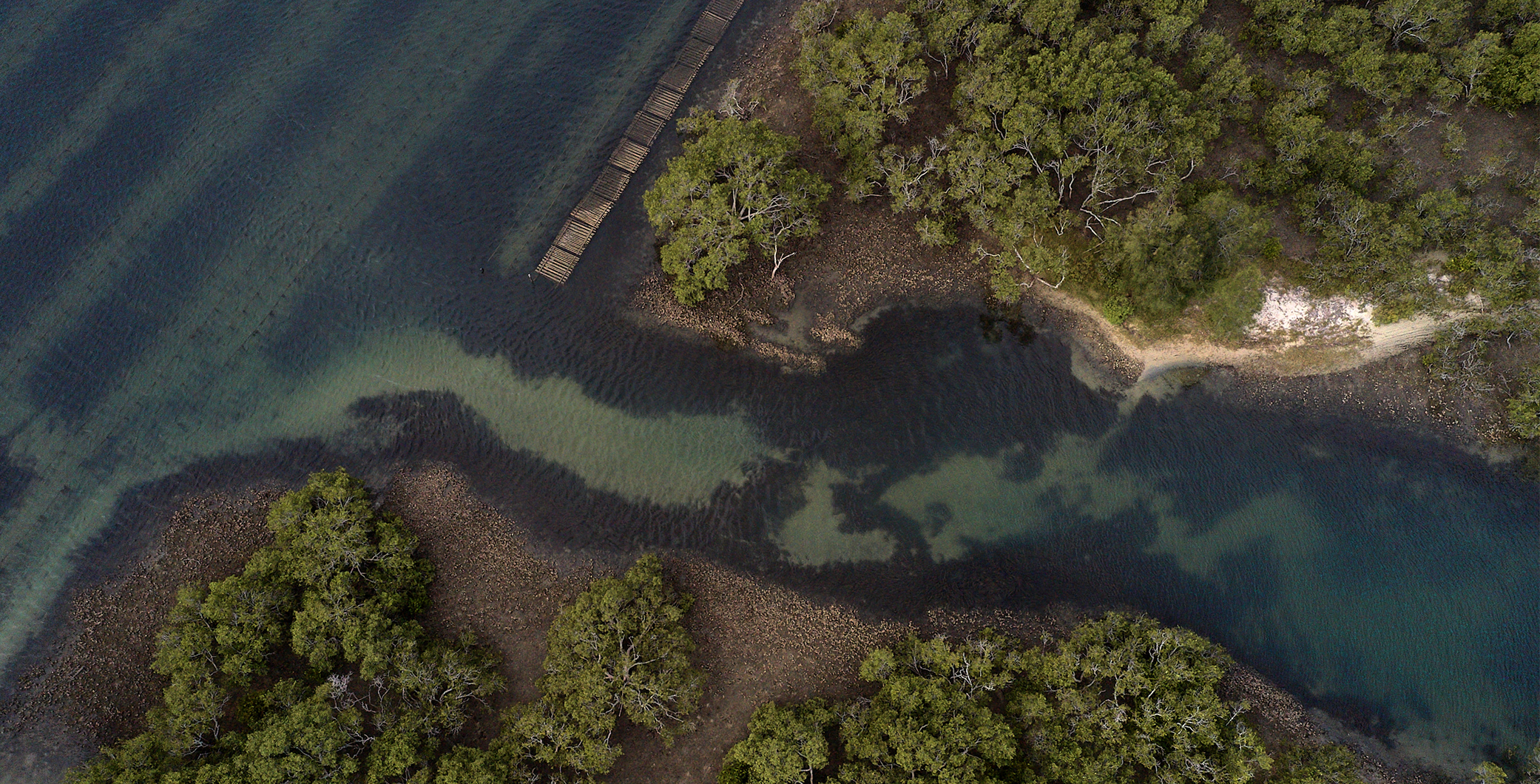 Wallis Lake
Wallis LakeWorimi Country | 36.629° S, 150.021° E
Wallis Lake on Worimi Country, 303km north of Sydney, is a vast estuary fed by four rivers and home to oyster farming since the early 1900s. Its waters create two flavour profiles: front-lake oysters, shaped by oceanic salinity and pebbly seabeds, are briny with low umami, while back-lake oysters, influenced by freshwater nutrients and silty beds, are creamier with higher umami. At their summer peak, Wallis Lake Rock Oysters are crisp, mineral-rich, and creamy with lingering sweetness.
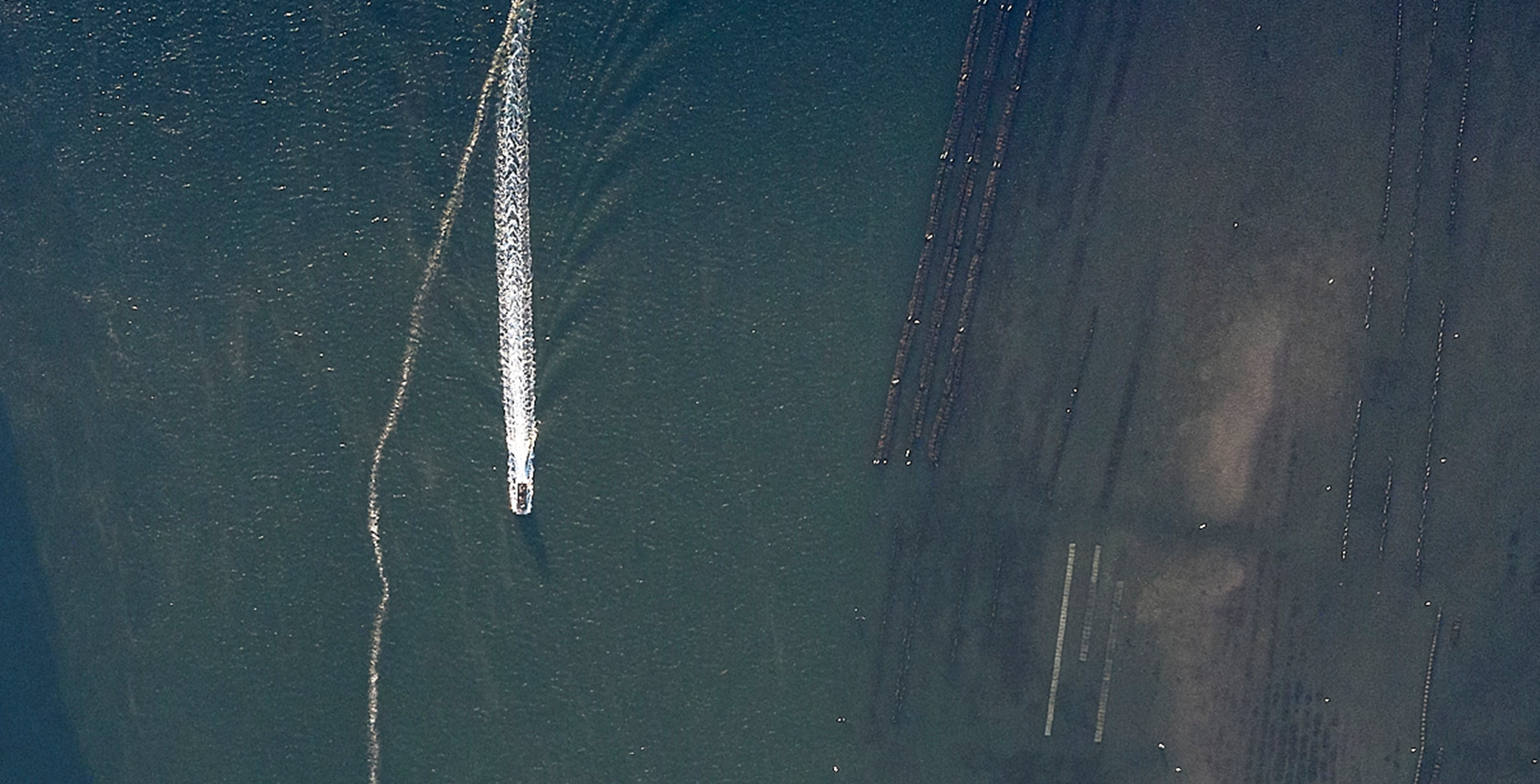 Port Stephens
Port StephensWorimi Country | 32.'693° S, 152.008° E
Port Stephens, on Worimi Country, is a vast estuary framed by volcanic headlands and fed by the Karuah, Myall and Twelve Mile Creek, which bring a mix of freshwater and nutrients. With moderate tidal movement, sandy-to-silty substrates and a broad ecological environment, it produces well-balanced Rock Oysters that peak in creaminess from summer to autumn. Their flavour is full and rich, with medium sweetness, mild brininess, lasting mineralisation and subtle vegetal umami.
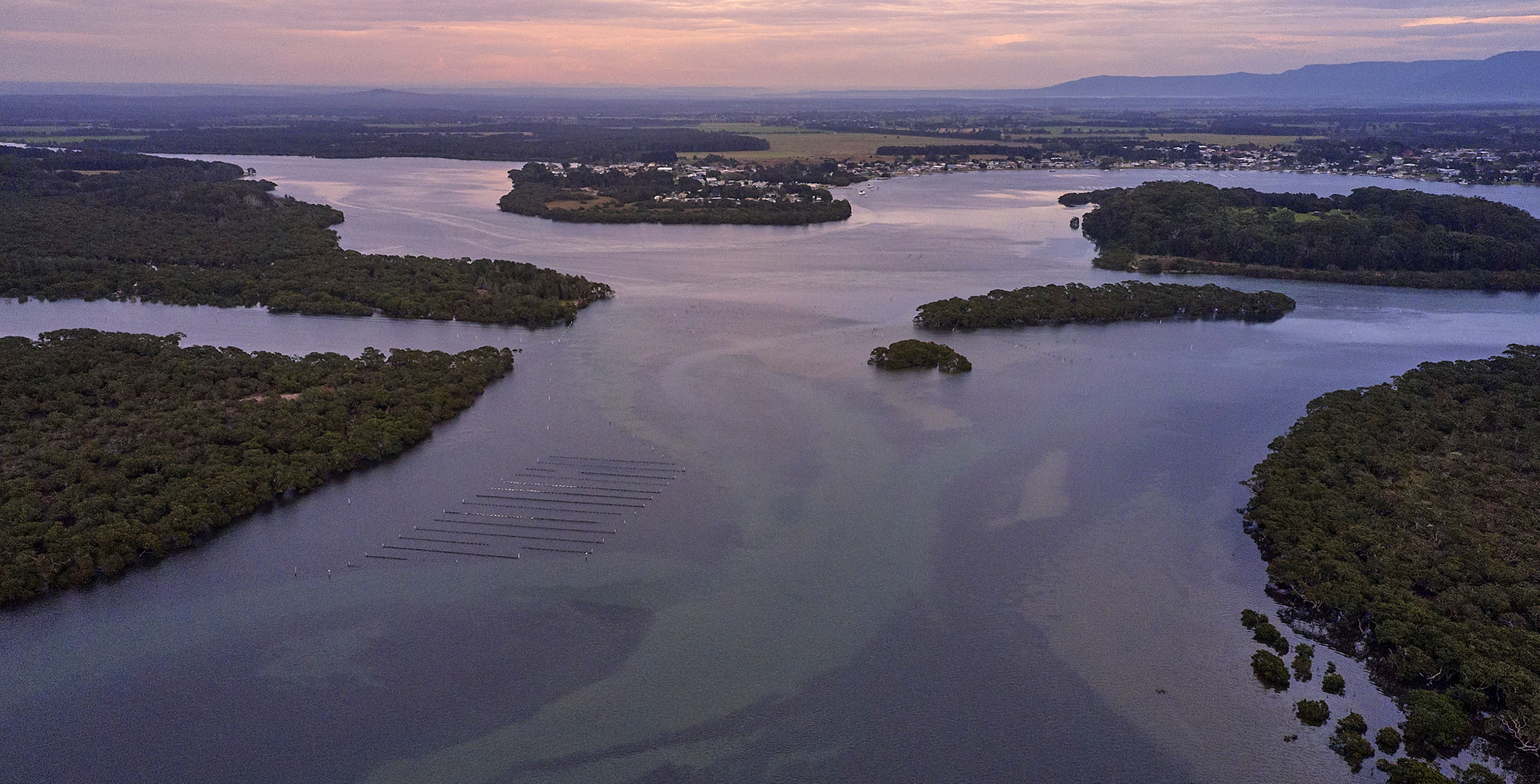 Shoalhaven
ShoalhavenTharawal Country | 34.915° S, 150.736° E
The Shoalhaven Rock Oyster, grown on Tharawal Country near Nowra, thrives where the Shoalhaven and Crookhaven Rivers meet the Pacific. Fed by freshwater from the Great Dividing Range and nutrient-rich wetlands, balanced with oceanic minerals, these oysters develop a medium brine, high sweetness, and unique mineralisation. At their creamiest from autumn to spring, they offer sweet, broad, creamy flesh with a crisp texture, mild brininess, and medium umami. Flavour profile: sweet, creamy, crisp, and delicately briny.
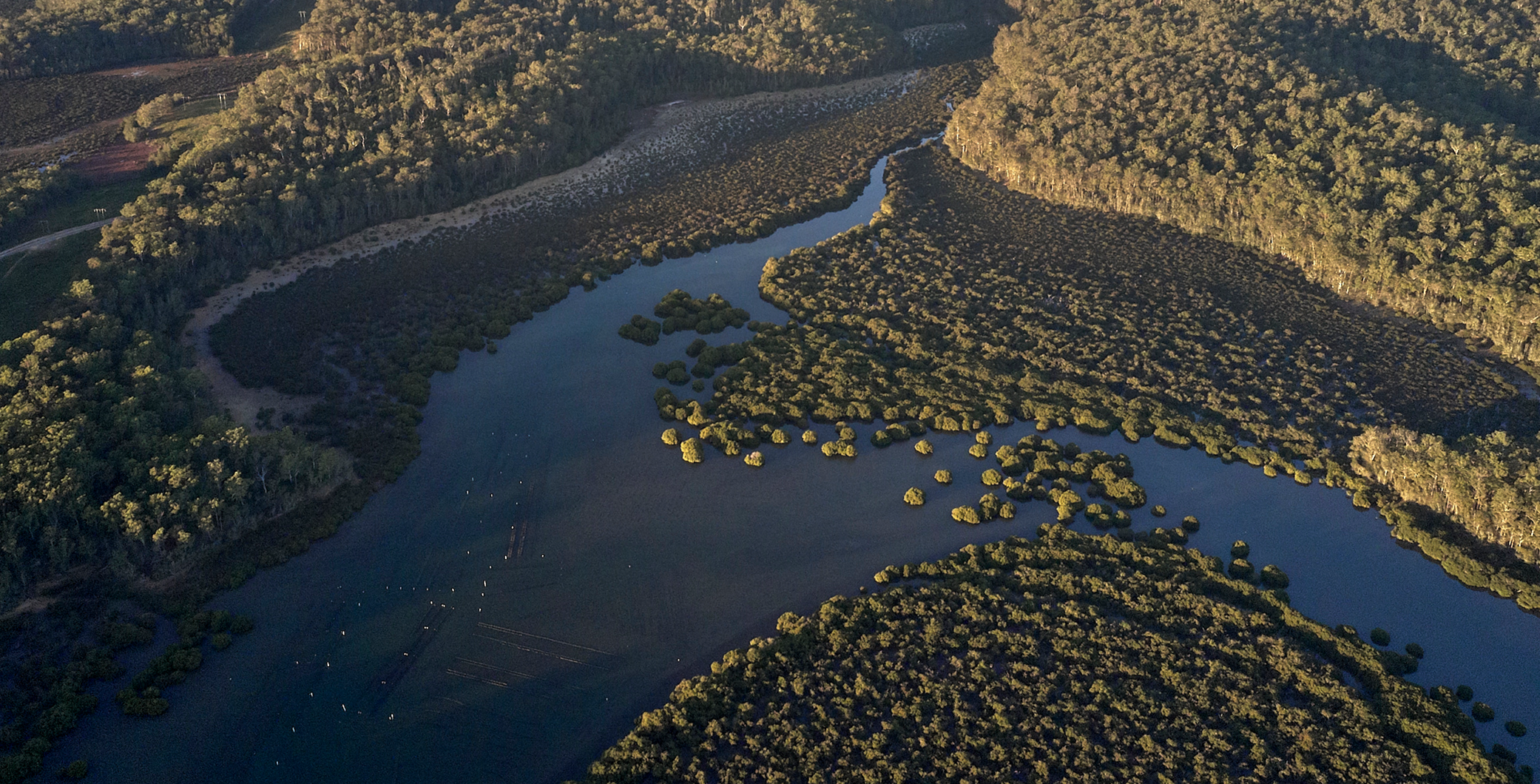 Clyde River
Clyde RiverYuin Country | 35.067° S, 150.172° E
Rising in the mountain ranges and flowing through Yuin Country to Batemans Bay, the Clyde River is a high conservation waterway rich in wetlands and seagrass. Its strong tidal fluctuations create variable salinity and nutrient-rich haloclines, producing oysters with medium brine, high creaminess, and crisp texture. Fed by organic nutrients from bushland and muddy seabeds, Clyde River Rock Oysters are sweet and creamy with light brininess, mild minerality, and a generous umami peaking in richness from winter through spring. Their flavour is sweet and creamy, with a crisp texture, light brininess, and mild minerality.
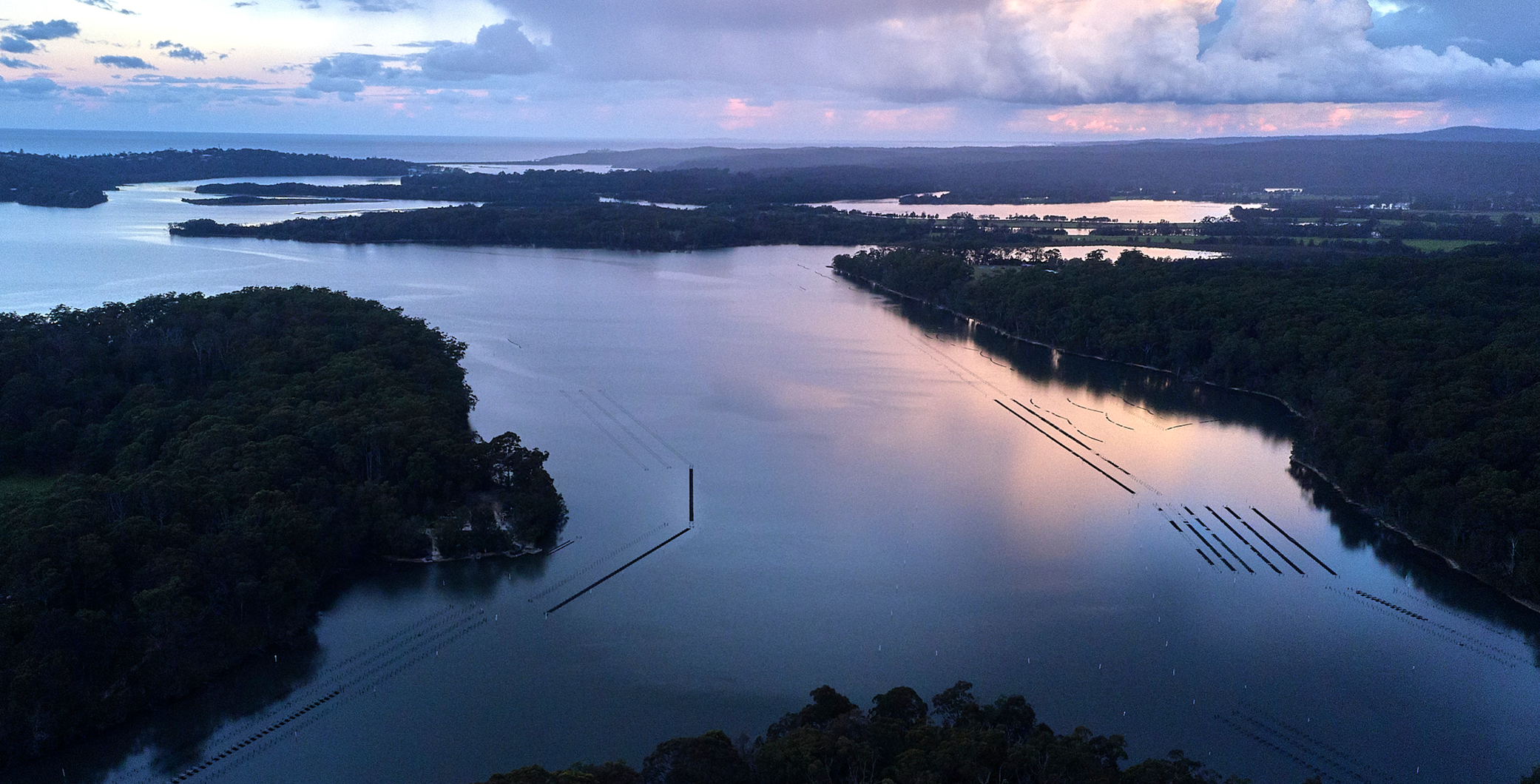 Tuross
TurossYuin Country | 36.067° S, 150.133° E
Tuross Lake, on Yuin Country 321km south of Sydney, is a vast estuary fed by bushland waterways and sheltered from the ocean, creating calm, nutrient-rich conditions for oyster farming. With little tidal influence and silty seabeds, the lake produces oysters that are creamy and sweet from autumn to spring, with medium minerality and a high umami. Their flavour is delicate, soft, and fresh, with light brininess and a big umami finish.
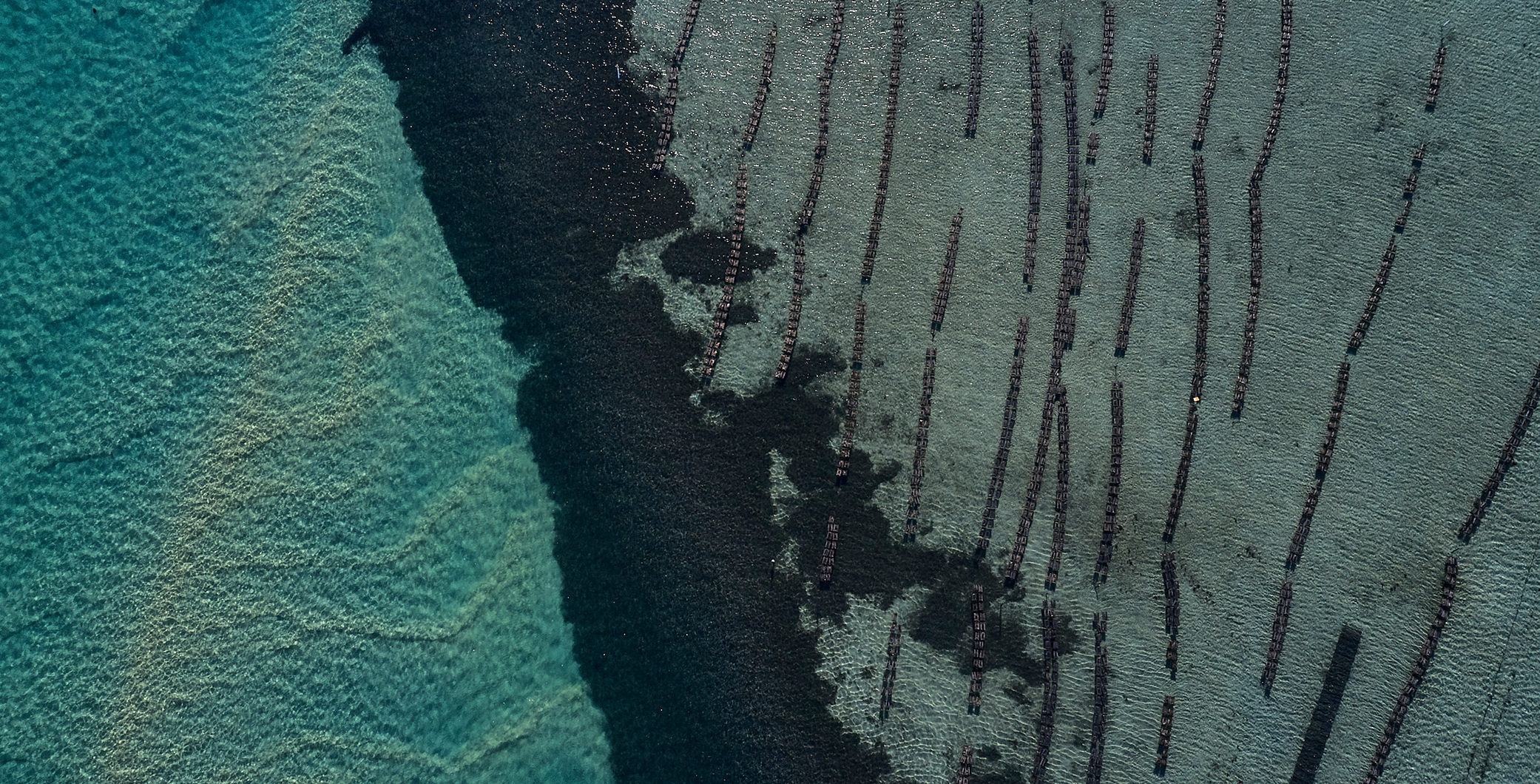 Wagonga Inlet
Wagonga InletYuin Country | 36.209° S, 150.100° E
At the heart of Australia’s Oyster Coast, Wagonga Inlet on Yuin Country near Narooma is an ancient drowned river valley renowned for its clear blue waters. With low freshwater inflows and strong tidal exchange, the estuary is highly saline, supporting rich marine life and extensive seagrass beds that nourish its oysters. Wagonga Rock Oysters are briny and creamy, peaking from autumn to spring, with sweetness balanced by oceanic minerals like zinc and copper. Their flavour is distinctly oceanic, with a briny front palate, medium umami, and a long, mineral finish.
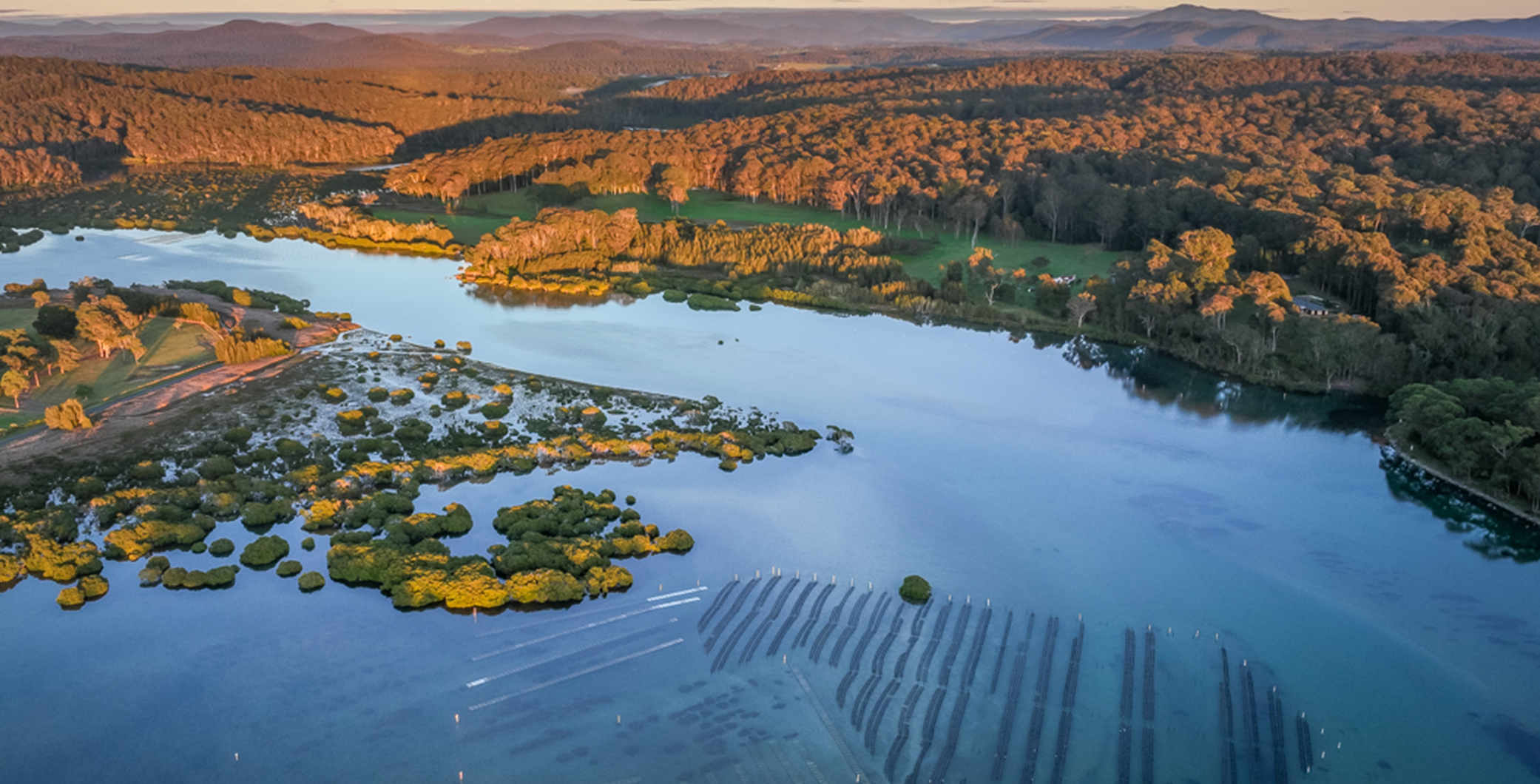 Bermagui
BermaguiYuin Country | 36.416° S, 150.066° E
On Yuin Country, Bermagui Rock Oysters grow in a shallow estuary fed by forest runoff and refreshed twice daily by ocean tides, creating a perfect balance of sweet and briny. Depending on where they’re farmed, oysters range from sweeter at the back of the river, rich in umami near mangroves, to brinier closer to the ocean. With trace minerals like copper and zinc and varied seabeds from silty to seaweed-rich, Bermagui Rock Oysters are creamy, briny, and moderately sweet with a lasting umami. Their flavour is marked by high brine and creaminess, balanced by sweetness and umami.
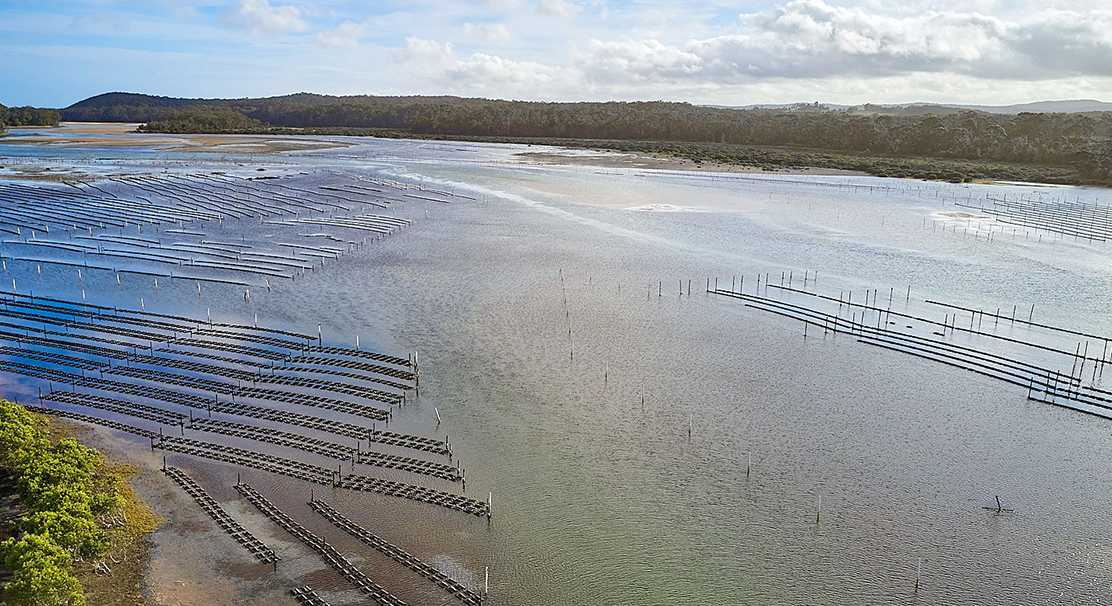 Wapengo
WapengoYuin Country | 36.629° S, 150.021° E
Wapengo Rock Oysters are grown in one of NSW’s most pristine estuaries, Wapengo Lake, on Yuin Country between Bermagui and Tathra. Surrounded by Mimosa Rocks National Park, salt marshes, and uninhabited bushland, the lake’s pure waters have nurtured oysters for thousands of years and supported farming since the late 1880s. With lower salinity and gentle tidal movement, the oysters develop medium brininess, soft mineral tones, and earthy umami. Strong winds stir nutrients from the silty, seagrass-rich seabeds, creating supremely sweet, creamy oysters at their peak from autumn to spring. Their flavour is mildly briny, soft in texture, creamy, with light minerality and an overarching earthy umami.
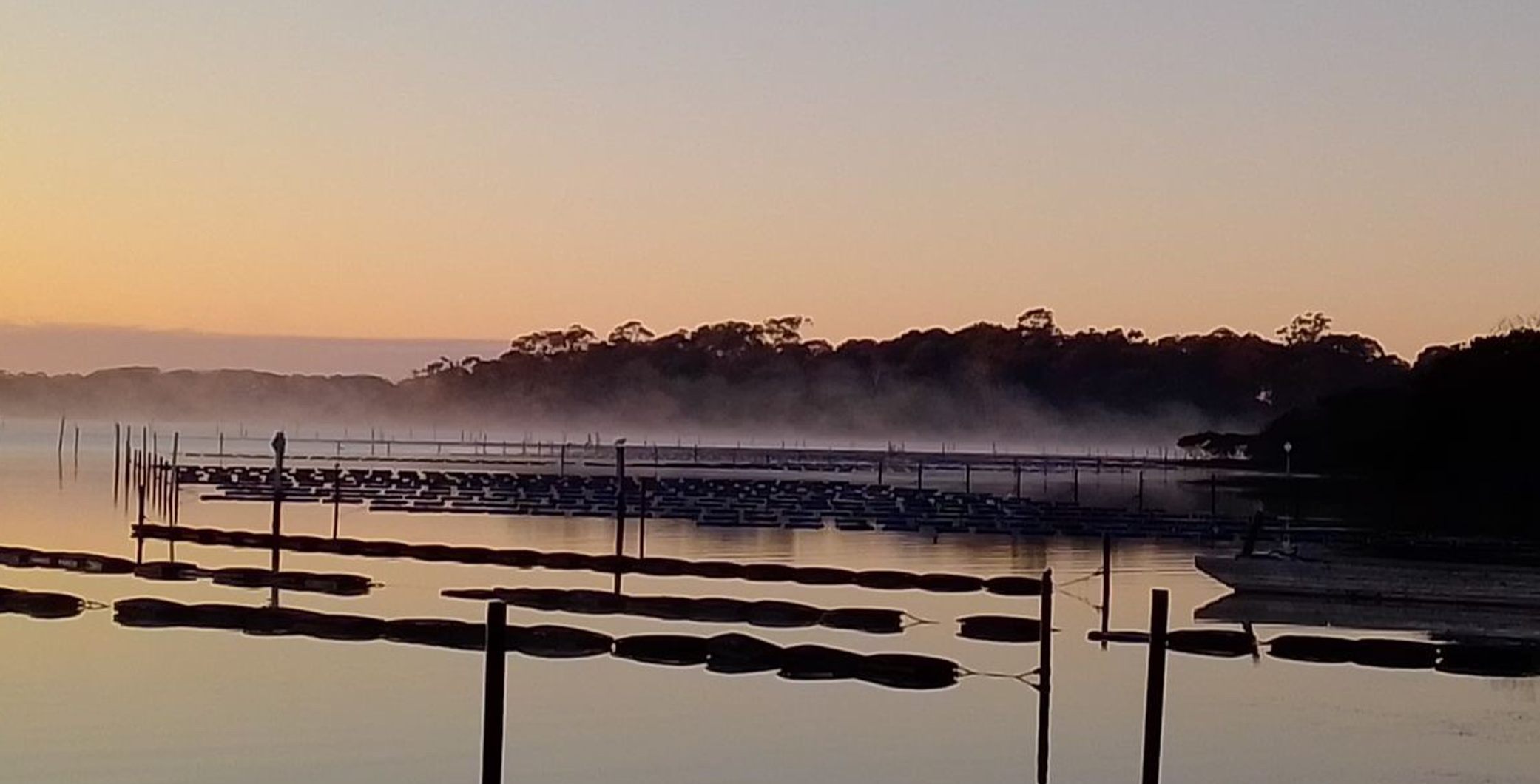 Merimbula
MerimbulaYuin Country | 36.897° S, 149.893° E
Merimbula Rock Oysters, grown in Merimbula Lake on Yuin Country along the Sapphire Coast, thrive in a narrow estuary with strong tidal currents, sandy seabeds, salt marsh wetlands, and mangroves. Constant seawater flow keeps salinity levels high, close to the Pacific Ocean, giving these oysters their signature brininess and elevated mineralisation from trace elements like zinc and copper. With creaminess peaking from autumn to spring and sweetness drawn from tidal flows and seagrass beds, Merimbula Rock Oysters are renowned for their briny and sweet balance with a bold mineral zing on the palate and a rich, creamy finish.
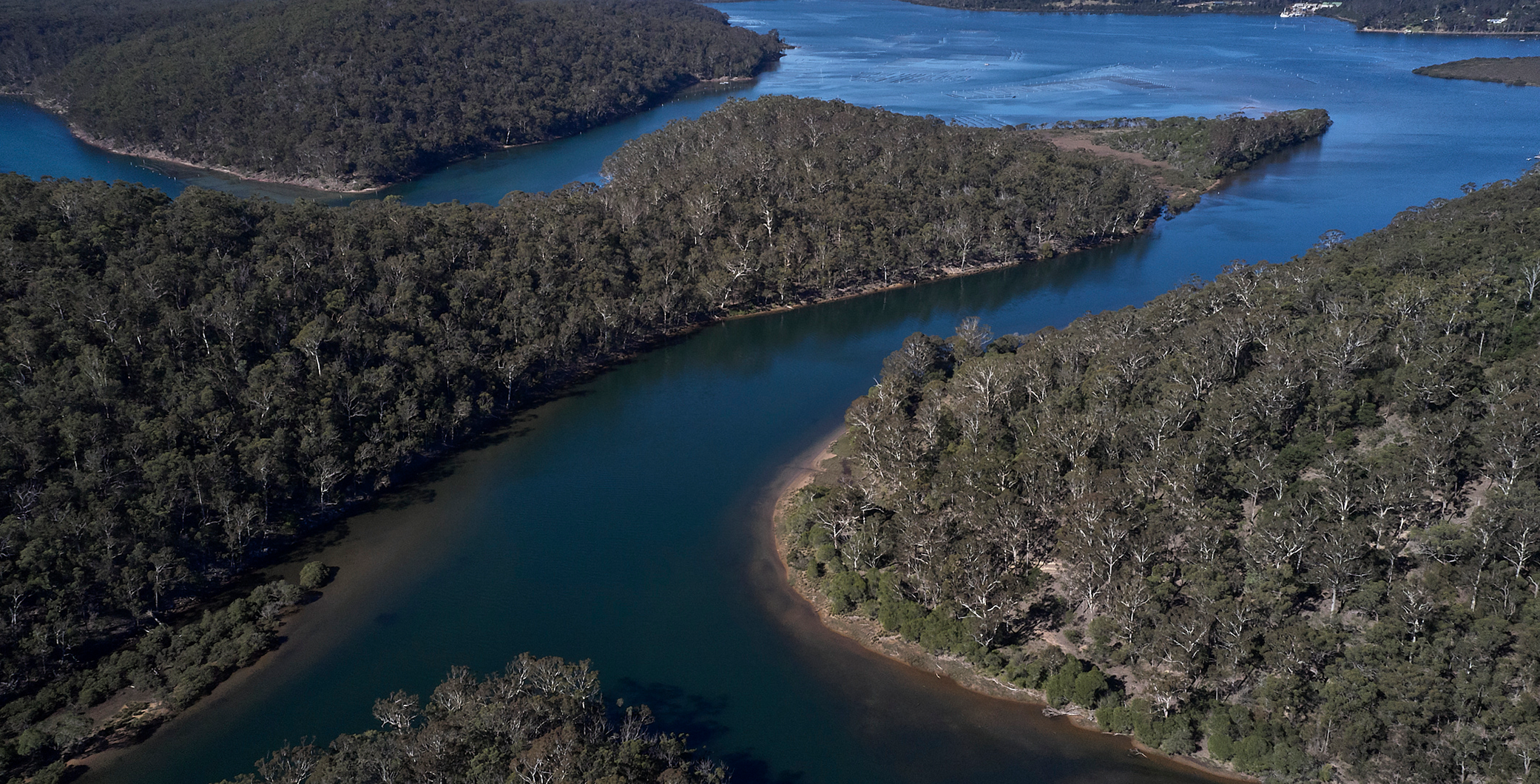 Pambula
PambulaYuin Country | 36.947° S, 149.917° E
Pambula Lake, or Broadwater, on Yuin Country just south of Merimbula, has been a source of food for the Thaua people for thousands of years and home to oyster farming for over a century. Fed by the Pambula and Yowaka Rivers and flushed daily by the Pacific, its clean, clear waters create ideal conditions for Rock Oysters. Strong oceanic influence brings trace minerals like zinc and copper, giving the oysters high brininess and pronounced minerality. With plump flesh, medium creaminess at its peak from autumn to spring, and umami drawn from silty, seagrass-rich seabeds, Pambula Rock Oysters are full, briny, and mineral-rich with a balanced umami finish.
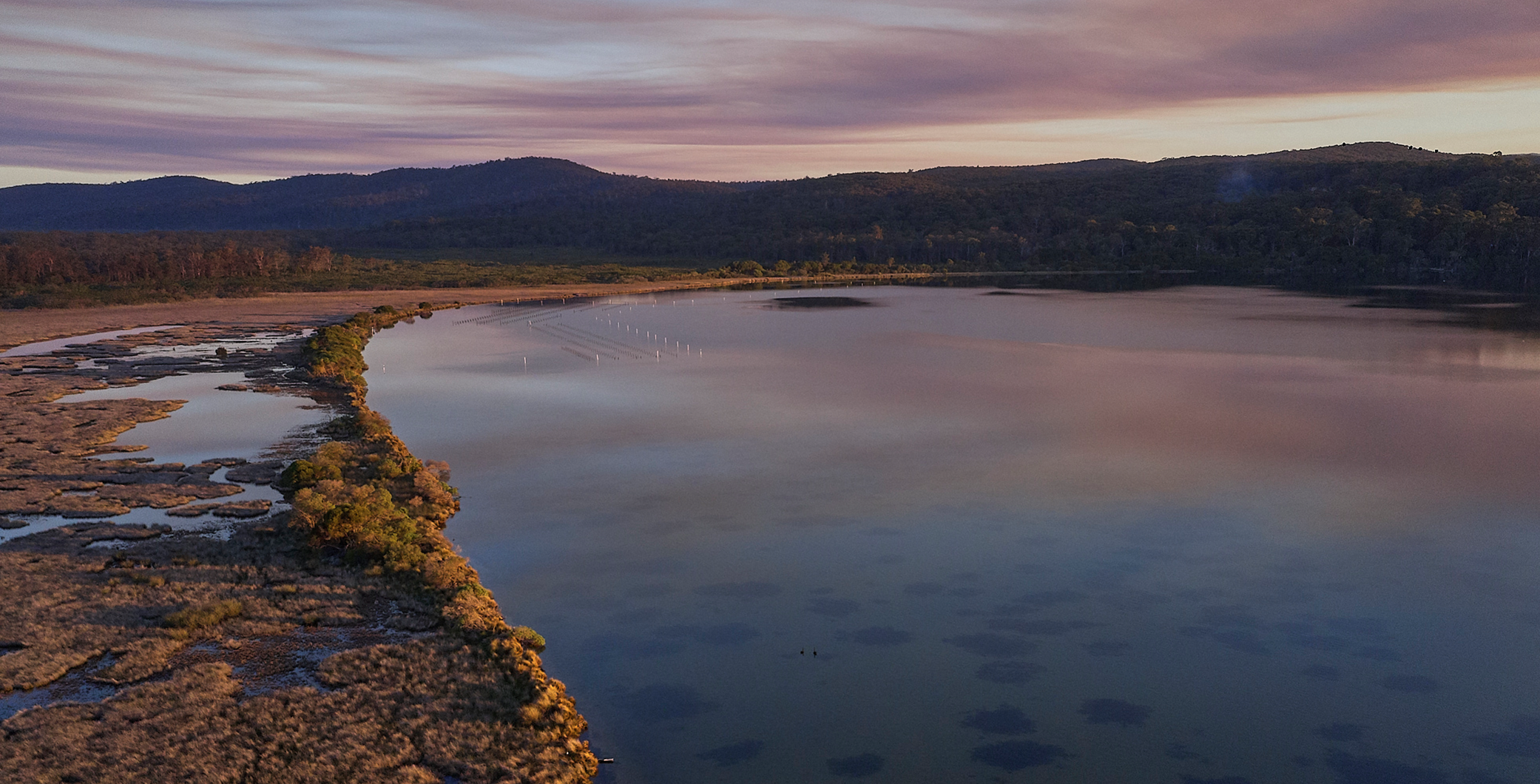 Wonboyn
WonboynBidwell Country | 37.250° S, 149.967° E
Wonboyn Lake, on Bidwell Country near the NSW/Victorian border, is the southern gateway to Australia’s Oyster Coast and one of the most pristine and remote estuaries in NSW. Fed by the Wonboyn River through Ben Boyd National Park and fringed by the Nadgee Wilderness, it has the coolest waters and lowest salinity of any estuary on the coast, giving its oysters the mildest brine. With high freshwater inputs, nutrient-rich muddy seabeds, and thriving micro-algae, Wonboyn Rock Oysters are plump, super creamy, with fruity sweetness, distinct vegetal notes, medium minerality, and a big umami finish.
Across these estuaries, oysters embody the Five Pitstops of Flavour:
1. Brine
‘Briny’ or ‘oceanic’ is the salty flavour found in an oyster and is the first pit-stop on your oyster journey. When an oyster is harvested, it retains salt water to regulate its environment and maintain condition whilst out of the water. The intensity of the brine is determined by the salinity of the marine environment from which the oyster is harvested.
2. Creaminess
Ninety percent of the oyster meat is made up of the reproductive gland. The level of creaminess in an oyster is determined by where the oyster is in its reproductive cycle. The level of glycogen or natural body fat and the progress of the oyster’s reproductive cycle is directly related to the temperature of the water and the food (algae) concentrations available to the oyster. As food concentrations and temperatures rise within the estuary, the oyster’s level also accelerates, increasing the creamy texture of the oyster. Once the oysters reach full reproductive maturity with optimum glycogen levels, the farmer will relocate the oysters to holding leases with high salinity to prevent spawning and maintain the oysters creaminess until harvest.
3. Mineralisation
Mineralisation is most prevalent on the back palate or by how the oyster ‘finishes’. The intensity of this flavour is directly related to the concentration of trace minerals accumulated in the oyster. Trace minerals such as zinc, copper, iodine and magnesium are found in oceanic waters and deliver the zingy, bright and defined mouth-drying flavour notes. These complex mineral notes are uniquely found in Rock Oysters, further enhancing its reputation as the ‘gourmet choice’.
4. Sweetness
The oyster’s adductor muscle connects the top and bottom shells. Its main function is to open and close the shell to allow water in and out. The adductor muscle is very similar in function to the meat of a scallop and the level of sweetness in an oyster is determined by the size of this muscle. When an oyster is underwater, it opens its shell by relaxing the adductor muscle. When the oyster is removed from the water, the adductor muscle contracts, closing the shell and holding water inside the oyster to regulate its internal environment. The more often an oyster is forced to open and close its shell, the larger the adductor muscle becomes and the sweeter the oyster.
5. Umami
Umami is that elusive ‘fifth taste’ that was identified early in the 20th Century by Japanese chemist Kikunae Ikeda. The word denotes a savoury flavour very separate from the easily described sweet, sour, salty, bitter flavours with which we are so familiar. It literally means the ‘essence of deliciousness’ in Japanese. The umami of an oyster resides in its protein. The oyster ingests organic particles and detritus (the organic matter that is created by the seagrass when it dies) from the water column and therefore takes on the umami flavour. Additionally, umami can come from an estuary with a high organic load in the benthos.
Together, these five pitstops form the language of oyster flavour; a vocabulary written by the estuary and spoken through each oyster. No two oysters will ever be identical, and that is their true charm. From higher-salinity estuaries yielding bright brine to freshwater-influenced systems offering sweetness and creaminess, each Rock oyster represents a taste of place. When enjoyed with intention, an oyster is more than food - it is an experience of provenance, a fleeting taste of the ocean’s story.
Our farmers hold a quiet yet powerful role: they listen to the estuary, selecting timing, technique, and movement to elevate merroir, not override it. Whether working in Wallis Lake or Wagonga Inlet, our farmers are custodians of the Rock Oyster’s story. From baby oysters to market size, they guide their growth with patience, moving them between leases or estuaries to align with the season, salinity, and food available. Techniques like careful grading and out-of-water conditioning refine flavour, texture, and longevity, but never override the estuary’s voice.
Each oyster is a true expression of its place, and the care it has received.
For chefs and diners, merroir is the key to appreciating oysters as a premium delicacy. Tasting across different estuaries is like exploring a coastline through flavour; a journey where no two bites are ever quite the same.
It also deepens our connection to place. When you enjoy an Appellation Oyster, you are tasting not just the oyster itself but also the estuary it was raised in, the care of the farmer, and the natural environment that sustains it. You are tasting provenance. You are tasting merroir. You are tasting place. You are tasting the incredible shellfish that is the native Australian Rock Oyster.